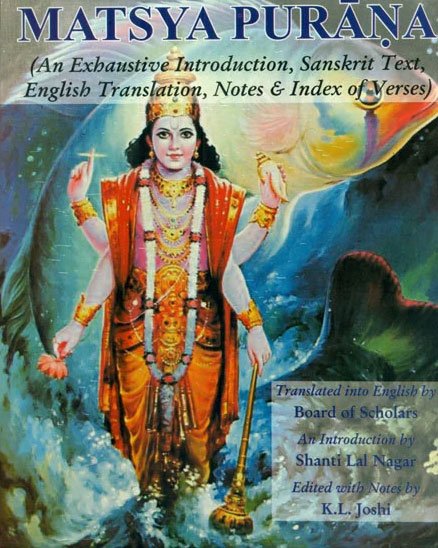The Matsya Purana (critical study)
by Kushal Kalita | 2018 | 74,766 words | ISBN-13: 9788171103058
This page relates ‘myth of the Fish Incarnation’ of the English study on the Matsya-purana: a Sanskrit text preserving ancient Indian traditions and legends written in over 14,000 metrical verses. In this study, the background and content of the Matsyapurana is outlined against the cultural history of ancient India in terms of religion, politics, geography and architectural aspects. It shows how the encyclopedic character causes the text to deal with almost all the aspects of human civilization.
Part 1a - The myth of the Fish Incarnation
As the name suggests the Matsyapurāṇa deals with the Fish incarnation of Lord Viṣṇu in its very first chapter. King Vaivasvata Manu once offered libation of water to his departed ancestors, when one small fish fell into his hand from the water. Then out of compassion the king put it into his water jar. However within the span of the night that little fish grew large measuring sixteen fingers in length. Being unable to fit into the jar it began to cry for rescue. When the king put it in a large pitcher then again the size of the fish grew in course of a night. Then it was placed in a well which again was proved insufficient for the growing size of the fish. Then the fish was shifted to a tank then in the Ganges and finally to the ocean. But the increasing size of the fish filled nearly the vast expanse of the great ocean.[1]
Seeing this, the king realised that this kind of amazing act could be done by Vāsudeva only. So he started praying Lord Viṣṇu at which Lord in the form of a fish appeared before him and declared that at the time of the dissolution the king would be able to rescue the whole Universe with the help of the Lord in that form of fish only.[2]
The fish told that the Universe would soon be deluged with water along with forests and mountains. Then Manu would take the charge of the boat made by the gods for helping the distressed at the time of danger. Manu was also advised to tie the boat to the horn of the fish which might otherwise fall in the danger of being driven away by the strong gusts of wind.
Footnotes and references:
[1]:
Matsyapurāṇa, 1.19-25
[2]:
, 1.30-34
